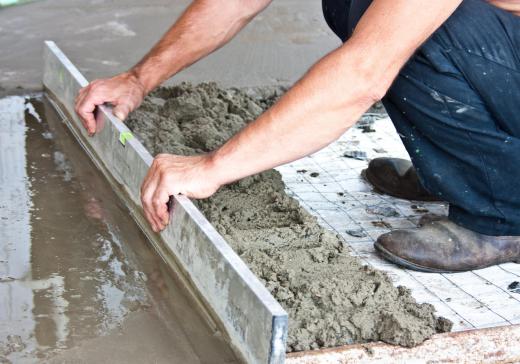A bull float is a concrete finishing tool that smooths fresh concrete surfaces. It features a long handle attached to a flat wood, aluminum, or magnesium piece called a float. The tool is used after the cement has been pressed down, or tamped, and it is considered a basic and essential concrete finishing tool.
The handle of a bull float can measure anywhere from 4 feet (1.2 m) to 16 feet (4.9 m) long and may be a threaded or a snap-in type. The float includes an attachment that accepts one of the handle styles. A universal adapter that fits either a snap or threaded handle can be purchased at many tool supply stores. A bracket assembly allows the angle to be adjusted to different positions so that the float can reach the concrete surface at the particular angle needed for each job.

The float is available in many different lengths, but the width is usually 8 inches (20.3 cm). The ends may be circular or rectangular in shape. The tool must be lightweight so that the user doesn't get overly fatigued. It evens out the surface and makes it level, and it also presses down any large aggregate — the gravel, sand, or stone in the concrete mixture — so that the result is more solid.
Using a bull float properly requires strong organizational skills since the process must be done while the concrete is still workable, or plastic, rather than set too much. The angle and amount of pressure used on the float is important also. A worker can't push on the tool too much, or the cement work already done could be ruined. Usually, several passes are needed to ensure that the surface is as smooth and as flat as it can be. This takes time and patience, as another smoothing pass may need to be done after the concrete reaches another stage in the hardening process.
